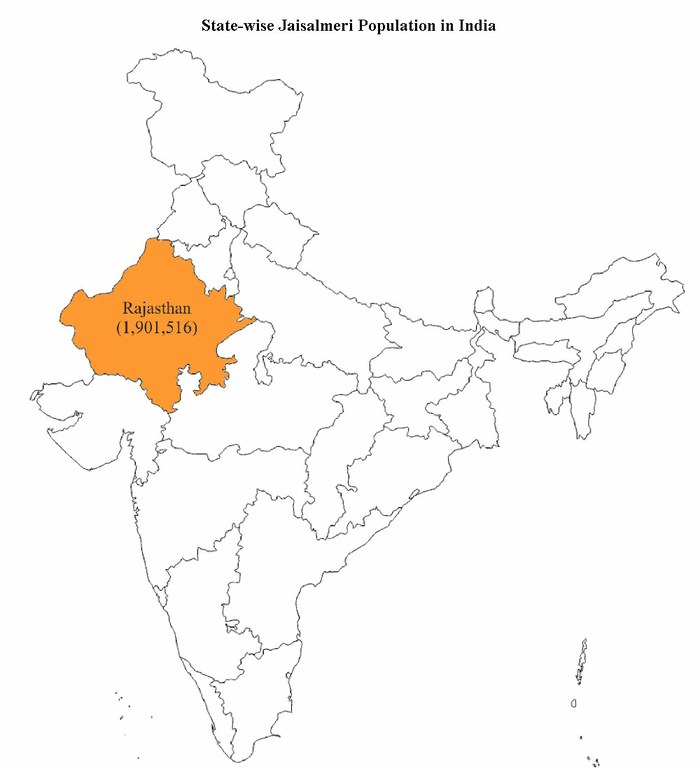Jaisalmeri
May 03, 2013
The name of the Jaisalmeri breed is derived from its home tract, Jaisalmer. They are distributed across the Jaisalmer, Barmer and Jodhpur districts of Rajasthan.
 Pure specimens are found in south western Jaisalmer, extending up to north western Barmer and southern and western Jodhpur. They are primarily reared by the Raikas and Sindhi Muslim communities. In terms of body size, this is the largest breed among the eight breeds of Rajasthan, and produces good quality carpet-wool. They are tall, well-built animals, with black or dark brown faces, with the colour extending up to the neck. Other characteristics include a typical Roman nose and long drooping ears, generally with a cartilaginous appendage. Both sexes are polled. The tail is medium to long and the fleece colour is white. Age at first breeding is 15-18 months for rams and 12-15 months for ewes. Lambing percentage is about 55 to 60. Litter size is usually single. Rams are selected on the basis of fleece weight for breeding and are usually bred by flock owners; in some cases they are exchanged with other owners. The ewes are not milked. Shearing is done three times a year.
Pure specimens are found in south western Jaisalmer, extending up to north western Barmer and southern and western Jodhpur. They are primarily reared by the Raikas and Sindhi Muslim communities. In terms of body size, this is the largest breed among the eight breeds of Rajasthan, and produces good quality carpet-wool. They are tall, well-built animals, with black or dark brown faces, with the colour extending up to the neck. Other characteristics include a typical Roman nose and long drooping ears, generally with a cartilaginous appendage. Both sexes are polled. The tail is medium to long and the fleece colour is white. Age at first breeding is 15-18 months for rams and 12-15 months for ewes. Lambing percentage is about 55 to 60. Litter size is usually single. Rams are selected on the basis of fleece weight for breeding and are usually bred by flock owners; in some cases they are exchanged with other owners. The ewes are not milked. Shearing is done three times a year.
The average greasy fleece weight per clip is 753 gm with an average fibre diameter of 35 μ and a medullation percentage of 40. According to the 18th Livestock Census the total number of Jaisalmeri sheep in the country is 1,901,516. (Refer to the maps below)
| Adult Male | Adult Female | |
|---|---|---|
| Average Body weight (kg) | 54 | 34 |
| Average Body length (cm) | 77 | 68 |
| Average Height at withers (cm) | 76 | 68 |
| Average Chest girth (cm) | 95 | 82 |


Text Source: NBAGR
Photo Source: CSWRI, Avikanagar









